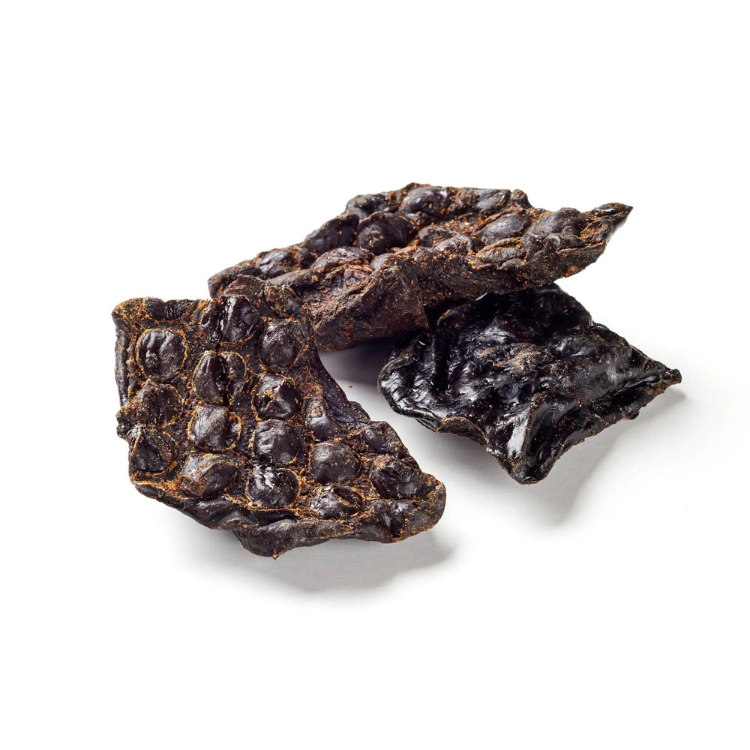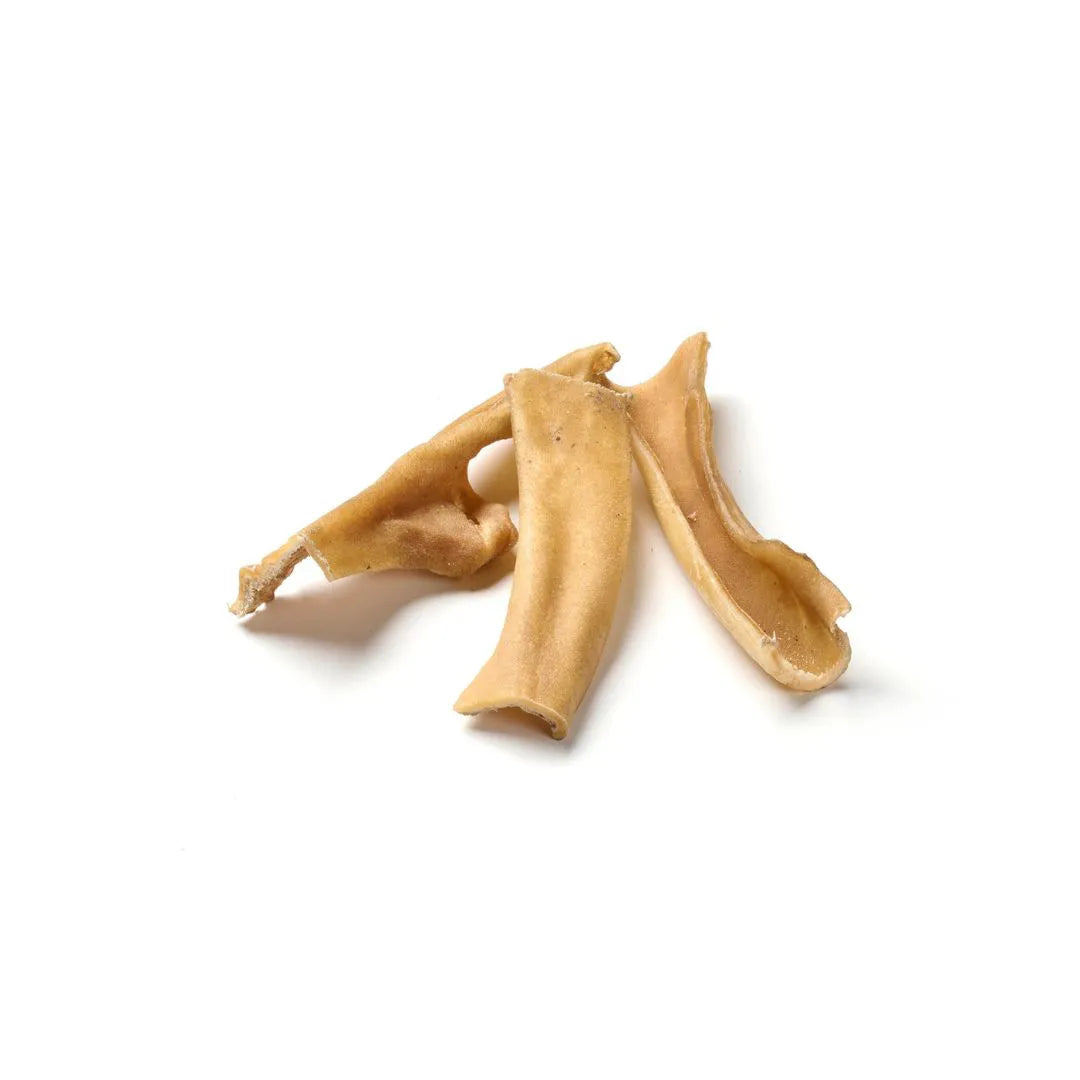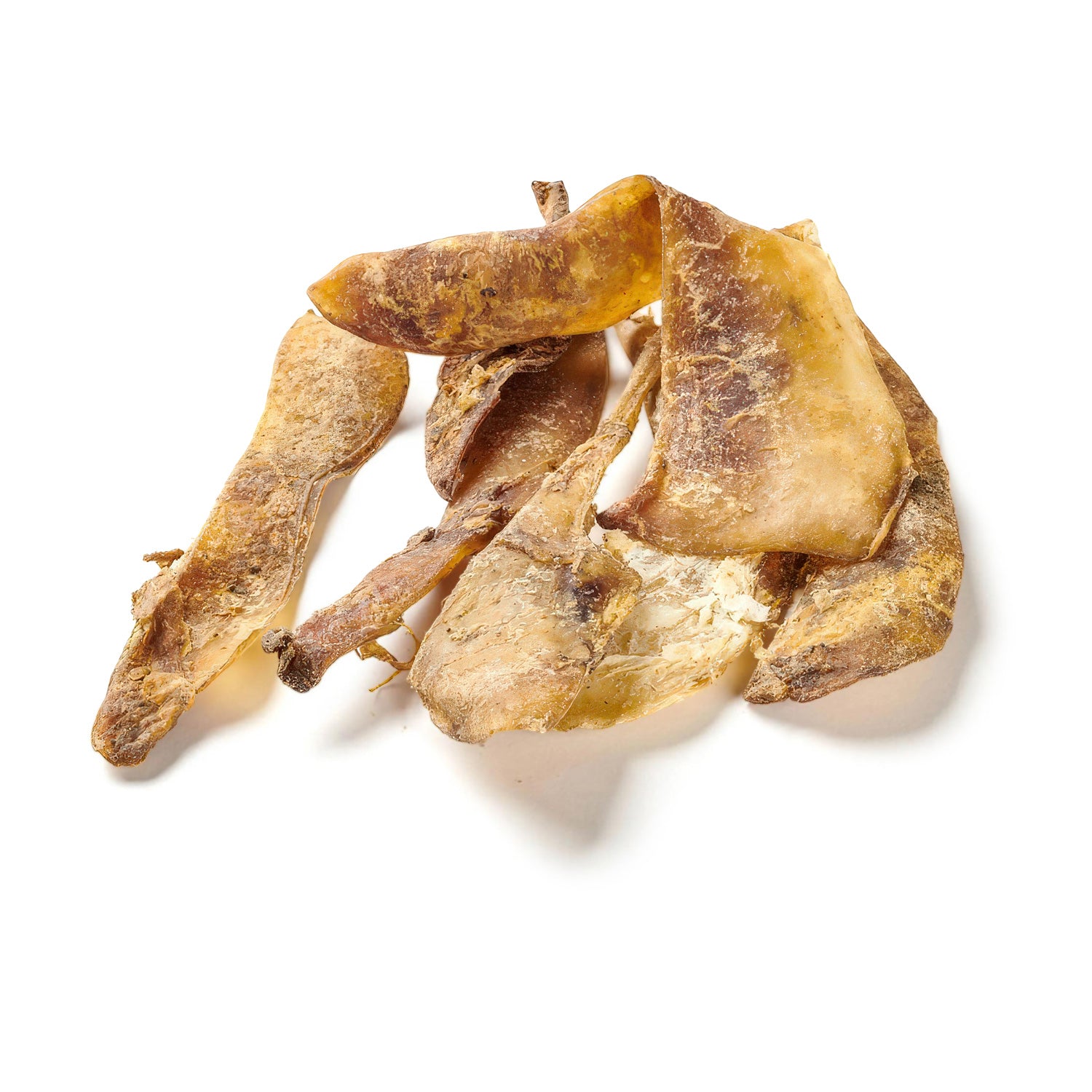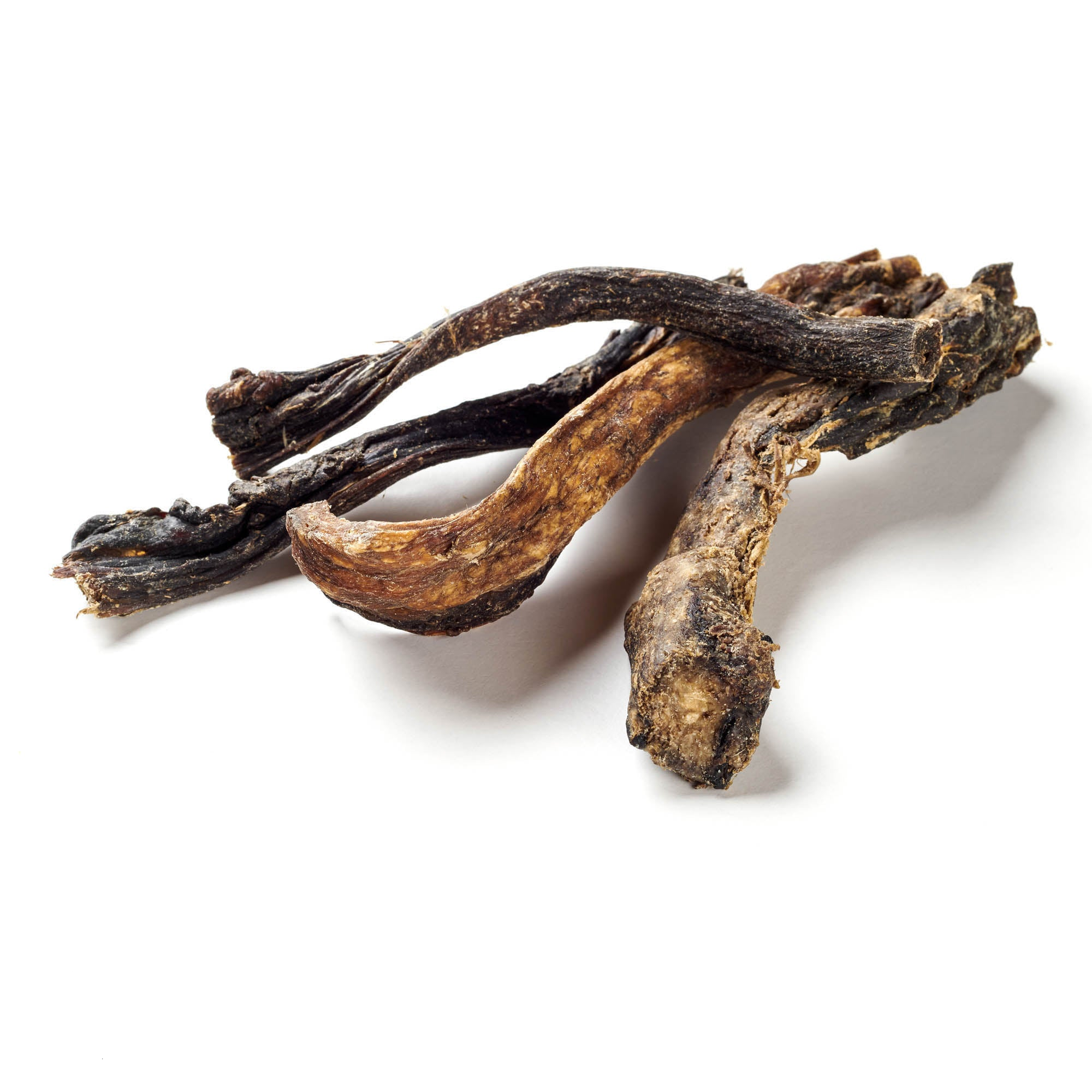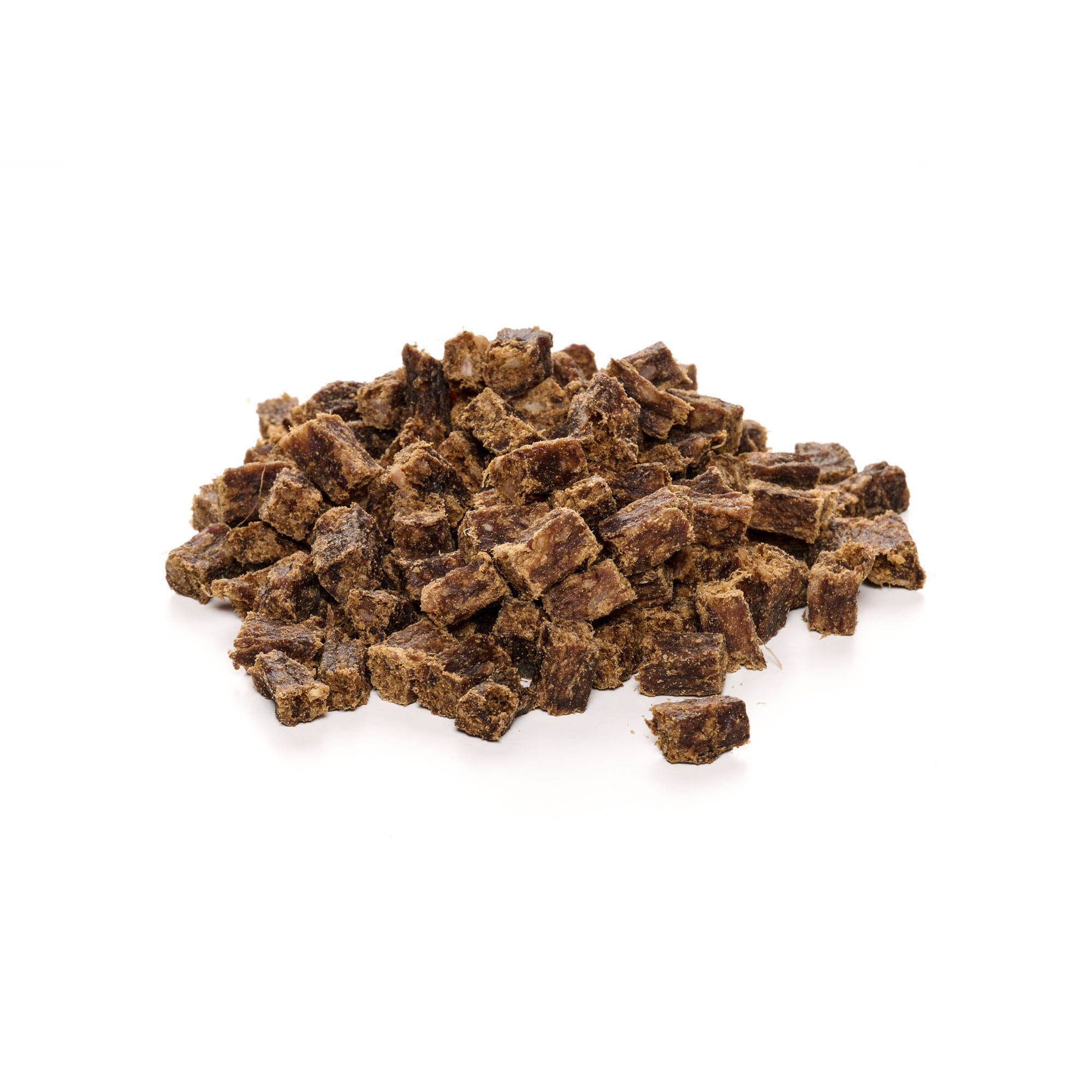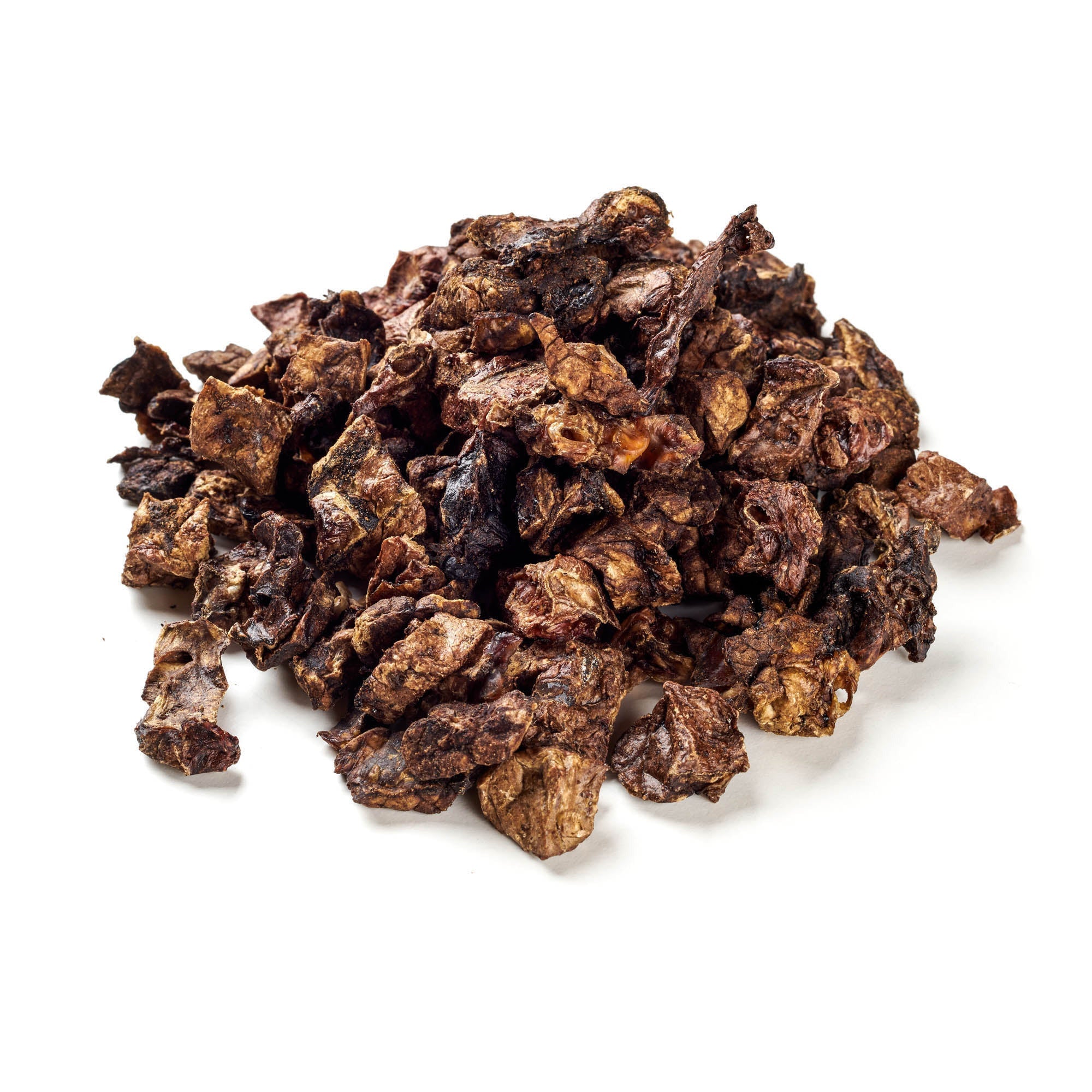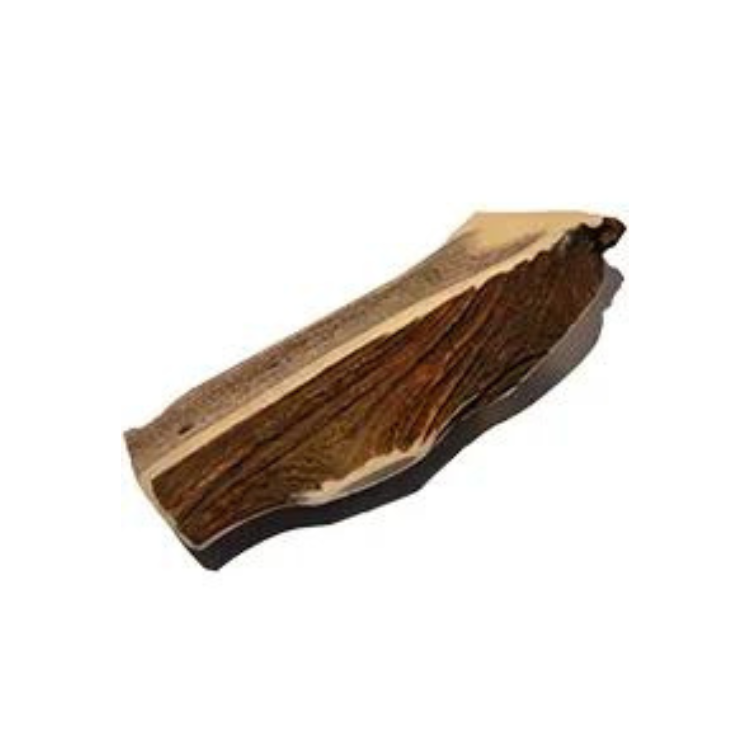
Dog food - what types of food are there?
Share
There are countless types of dog food. Manufacturers seem to want to outdo each other with ever new flavors and ever healthier food for our beloved four-legged friends. But what types of dog food are there, which is suitable when and for which dog? We have got an overview and will show you everything you need to know about dog food!
Which dog food is the best? What can my dog eat and what can't he eat? If you're asking yourself these and other questions about dog food, then you've come to the right place!
Our dogs' diet is one of the most important aspects of their health. The choice of food can be responsible for allergies and serious illnesses. This makes it all the more important to handle it responsibly. As with many topics, there is not just one opinion on dog food. Many different views and beliefs are confusing.
It's not just newbies who are often overwhelmed by the huge selection of different types of dog food. Many experienced dog lovers also keep asking themselves: What is best for their own dog? How healthy is baked dry food or is cold-pressed food perhaps healthier? In order to better understand which dog food is the right choice for your furry friend, we need to get an overview of all the different dog foods, because there is not only the right food for every age, but also for virtually every situation in life.
Here you will find out everything you need to know about dog food, what types of food there are, what properties they have and what advantages and disadvantages each type of food has, so that you only feed your dog dog food that is suitable for him. The goal should be to feed your dog a balanced diet and at the same time find out whether he suffers from allergies or intolerances. This way you can ensure that your dog stays happy and healthy.
Contents: Dog food - what types of food are there?
- The dog food basics
- What types of dog food are there?
- Wet food
- dried animal food
- BARF & pure meat
- Hypoallergenic dog food
- Vegetarian and vegan dog food
- Conclusion
Treat your dog to something special with our chew products!
The dog food basics
In general, dog food should contain around 65% meat. Good dog food with a high meat content should be supplemented with various vegetables or fruits. This is beneficial for your dog's health, as it is closest to the natural way in which all canids (e.g. wolves, foxes, coyotes, wild dogs) eat.
This basic rule follows the wolf's natural eating behavior. The prey animals killed in the wild had pre-chewed and digested plant and vegetable remains in their stomachs, which therefore formed part of their diet.
However, other factors also play an important role when choosing the right diet for your dog. When choosing food, you should also consider the breed of dog, whether it is a small, medium or large dog and whether the dog has any allergies or intolerances.
What types of dog food are there?
- Grain-free dog food
- dried animal food
- Wet food
- BARF dog food
- Hypoallergenic dog food
- Vegetarian dog food
- Vegan dog food
As we all know, there are many different tastes, and this applies to both humans and dogs. The question of what is the best dog food usually doesn't give a clear answer, as it varies greatly from dog to dog and nowadays you can even cook dog food yourself.
If you want to make your own dog food, you should pay close attention to the freshness and quantity of the ingredients. Of the many different types of food that are now on the market, we will present the most important categories in more detail here.
Wet food
Wet dog food is widely available and usually comes in cans. The advantage is the high amount of liquid that the dog consumes with the food. It is good quality and is suitable as a complete food. It is easier to digest and chew and some dogs prefer it. Compared to dry food, it is usually a little more expensive because it is not as effective. It is also much more cumbersome and heavy in the cans. A lot of aluminum waste is also produced, although there are more and more alternative packaging materials. Many dog owners therefore opt for a mixture of wet and dry food.
High-quality dog chews for your faithful companion can be found here!
dried animal food
The first ready-made food for dogs was baked dry food. For 150 years, the ingredients have been ground and baked as dough at at least 120 degrees, which usually means that many valuable ingredients such as vitamins are lost. Baking makes it easy to digest.
As the name suggests, dry food is a type of food that requires little to no liquid. When it comes to dry food for dogs, a distinction is made between two similar but different processes: cold pressing and extrusion.
Cold-pressed dog food is usually made using a process known as cold pressing. In this process, the ingredients are first dried and then ground.
The food is then pressed into the desired shape using a roller under pressure. This process compacts the ingredients and causes them to stick together. This presses the food into the familiar shape of the pallets.
This process is used for both forms of dry food production. The difference is that with cold pressing, a temperature of only about 80 °C is reached, whereas with extrusion, the temperature rises to up to 120 °C. Steam is also used in extrusion.
BARF & pure meat
Raw meat feeding
When it comes to an animal that is descended from the wolf, it makes sense to feed meat. Of course, there is controversy about this too - but those who decide to feed their dogs only meat may do so because of their dog's allergies. Whether out of conviction or for good reason, the options are varied here too. Almost all types of meat are now available and some of them have special properties. Some need to be cooked, others don't.
Barf
When serving BARF dog food, you give dog food with a high meat content, which is based on the original, natural diet of a dog. When "BARFing", the focus is therefore primarily on raw and fresh ingredients.
Although raw meat is the focus of BARF, it is also important to complement the diet with fruits and vegetables so that the dog receives all the nutrients it needs.
Consequently, this aspect should not be overlooked when BARFing ( biologically appropriate raw feeding ). Ideally, the vegetable and fruit additives should be added to the food in pureed or cooked form.
Hypoallergenic dog food
Hypoallergenic dog food is dog food that is designed for dogs who suffer from allergies. Suffering from allergies can be a difficult situation for both you and your dog, so it's good to know that there is a realistic chance of improvement.
As with us humans, it is unfortunately often the case that our four-legged friends suffer from intolerances and allergies.
It is estimated that around a quarter of all dogs suffer from allergies.
What makes hypoallergenic food particularly special is its simplicity with regard to known allergenic substances. This means that with hypoallergenic dog food, great care is taken to ensure that the food is free from the most common allergens.
The food is often based on just one type of meat, which reduces the complexity of the composition and allows a much better overview of the ingredients. The problem with many types of dog food is that they are made up of different types of meat and vegetables.
Grain-free dog food
Another type of food that can be a useful alternative for dogs with allergies is grain-free dog food.
If your dog suffers from an intolerance or an allergy, then it is essential to take a closer look at the food he eats every day.
Over time, you can discuss whether your dog is allergic to grains or gluten, for example, and whether it would be better to eat grain-free dog food . For some dogs, grain-free dog food with a high meat content is the right choice.
The problem with grains is that dogs sometimes have a little trouble digesting them properly, which can lead to a disruption of the intestinal flora and other side effects such as mild to severe stomach pain. However, the amount that each dog can eat varies from dog to dog.
However, if your dog is intolerant to gluten, you can change their diet, and fruit and vegetables can be very helpful in controlling their intolerance or allergy . What is considered the best grain-free dog food depends on the dog's individual situation.
Vegetarian and vegan dog food
The number of vegetarians worldwide is constantly increasing. It is estimated that there are currently around 6 million vegetarians living in Germany. The decision of many people to follow a vegetarian diet is also reflected in the diet of many dogs.
Vegetarian dog food has now become an integral part of accepted dog nutrition and is available in many different variations.
But even with this diet, dog owners must always be on their guard, as there are some vegetables and fruits that are not good for most dogs.
So if you feed your dog a vegetarian diet, you should pay close attention to whether your dog has any intolerances, at least at the beginning of the diet change.
Vegan
As a continuation of the vegetarian diet, the number of people who eat vegan is also increasing. Those who eat vegan avoid the consumption of any kind of animal products.
If you follow a vegan diet and only want to feed your dog vegan dog food, it is important that you still guarantee your dog a balanced diet.
One of the most important points, for example, is that your dog continues to get the essential proteins that he normally gets from eating meat. If the food contains the important proteins, vitamins and minerals, there is nothing wrong with feeding your dog a vegan diet.
We don't believe in feeding dogs a vegetarian or vegan diet, and neither do many vets. Plant-based protein sources have an amino acid profile that is not optimal for a dog's diet. Although it has many benefits for us humans and the environment, we must recognize that dogs do not have the same physiology.
Conclusion
There are a variety of dog foods on the market, each with its own advantages and disadvantages. Choosing the right food depends on many factors, including your dog's individual needs, age, size, breed, and any health issues they may have. It's important to carefully consider the different options and speak to a veterinarian if necessary to ensure you make the right decision and provide your dog with a balanced and healthy diet.
Delicious dog snacks for pure enjoyment are available from us!

